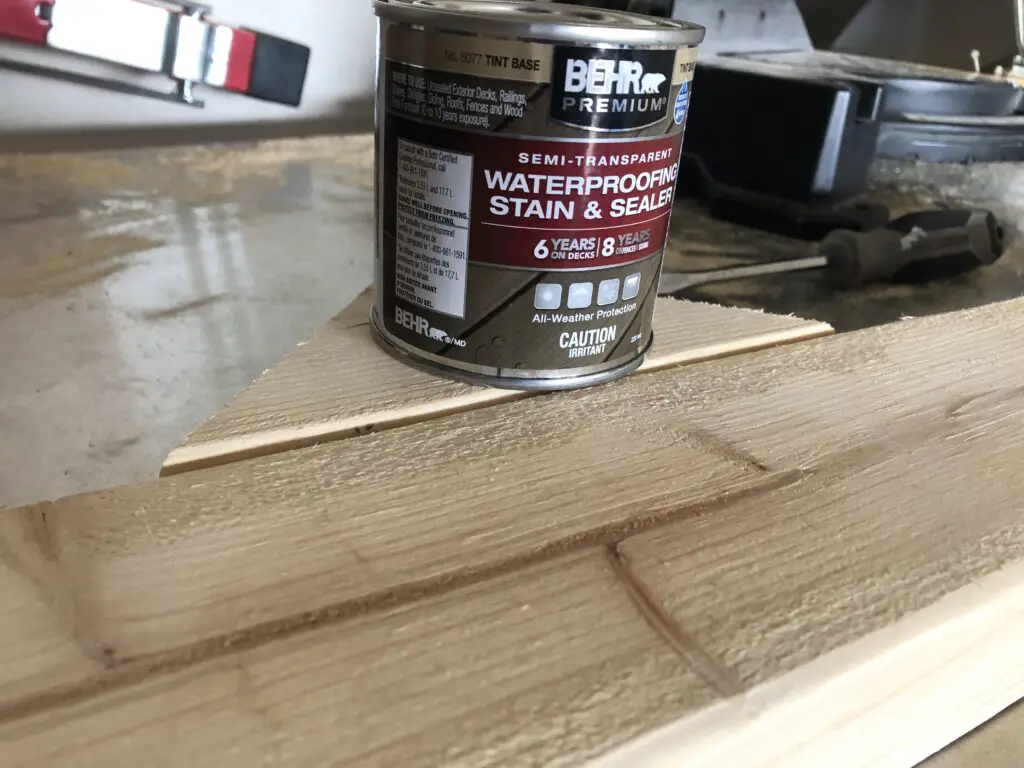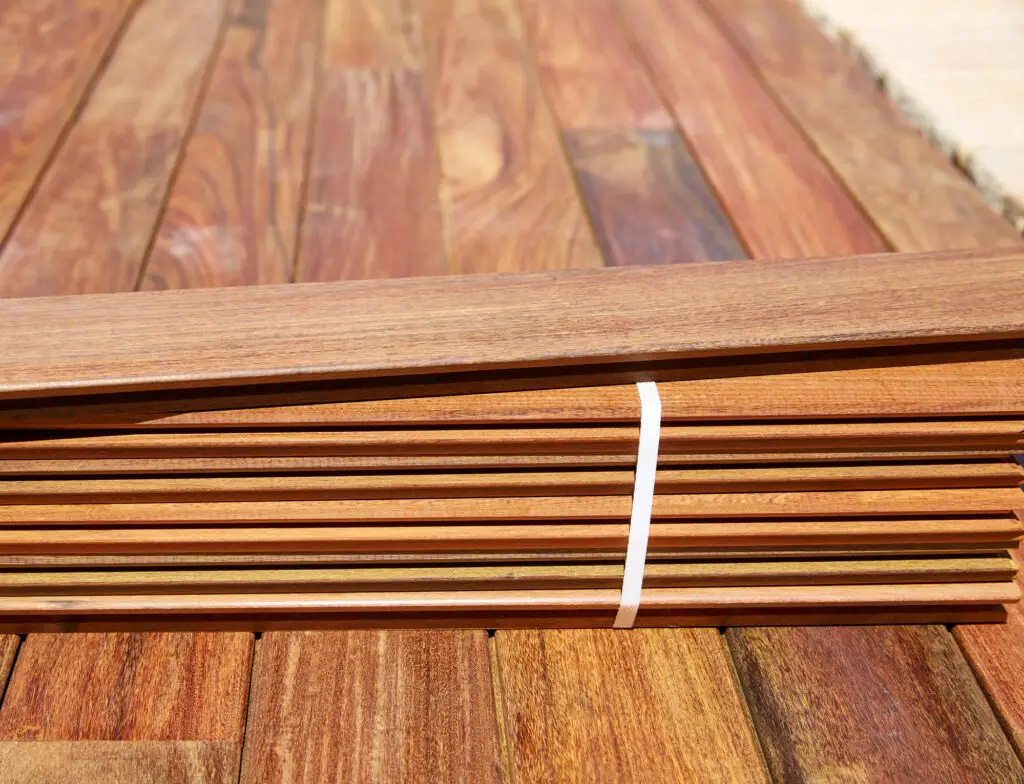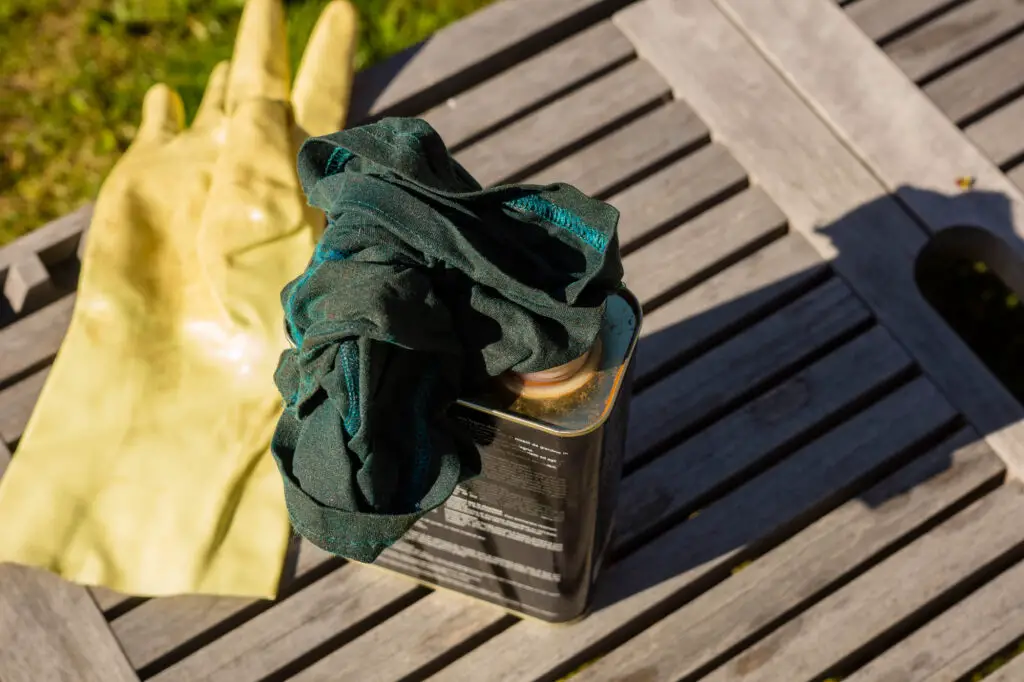Uh Oh, What happens if you don’t wipe off wood stain?
Any woodworker will tell you that the natural state of wood can be extremely beautiful, but there are times when the natural colors of wood don’t match the tone that you desire. Stain can be an excellent way to adjust the color while also bringing out the grain patterns in the workpiece.
But staining wood can be complex. There are great variances in wood from species to species, and even from tree to tree. All of these variances will cause the wood to absorb stains at different rates.
Pro Tip: Absorption rates will vary from workpiece to workpiece. For this reason, it is always good to practice staining on a scrap piece or cut off to ensure you achieve the desired effect.
The best way to ensure that you achieve the desired stain color is to follow the manufacturer’s instructions. When stain application is too thick or the stain is left on too long, the results can be less than ideal. You can end up with discolored or blotchy spots on your workpiece, and the over-saturation of the wood can result in a poor finish that will compromise the wood in the long term. For this reason, it is best to remove the excess stain before it dries.
Getting Good Stain Results
There is a basic rule for getting good wood stain results. After applying a wet coat of stain, wipe off any excess before the stain dries. If the excess is allowed to remain, you may find that the liquid solvents within the stain will evaporate. This leaves behind sticky pigment that may never dry fully.
While it may seem intuitive to leave a stain on the wood longer to achieve a darker color, this does not actually work. The unabsorbed stain will simply sit on top of the wood and may peel off later. Stain is meant to dry within the wood, not on top of it.
Here’s a great application guide from a major stain manufacturer, to help you get the best results
Wood Absorbing Too Much Stain
Ending up with an uneven stain can be quite annoying, especially after you have worked long and hard on a project. To prevent the wood from absorbing too much stain, there are a few steps you can take.
If your workpiece has end-grain pieces, you will want to sand those with a higher grit than the rest of the piece. For instance, if you are using 180 grit for sanding, use a 220 or 320 grit on the end-grain pieces. This finer grit will stop the end-grain pieces from soaking up more stain than the rest of the workpiece.
Another way to stop the wood from absorbing too much stain is to apply a glue mixture to the end-grain pieces. Mix water and white glue at a 10:1 ratio, and brush it on the end-grain sections. Allow it to dry for several hours, and then sand it lightly before staining. The glue will embed in the wood and stop stain absorption.
What to do When Wood Stain Won’t Dry
In most cases, there are two main reasons why your stain won’t dry: the environment or the stain.
The Environment
Too much humidity or temperatures that are too cool can prevent your stain from drying. If you cannot avoid these environmental factors, it is best to go with a “high performance” stain. This type of stain dries more quickly
The Stain
If you are attempting to stain your workpiece a very dark color, you may have more difficulty getting it to dry. The overly tinted oil-based stain often doesn’t dry as well as lighter colors. If you wish to achieve a darker look, it may be better to use a dye stain or a lacquer.
How to Remove Stain That Won’t Dry

You should expect your stain to dry in 24 to 48 hours (this is the minimum amount of time you should wait before following up with a polyurethane coat.) Some stain manufacturers may even suggest waiting up to 72 hours for the stain to completely dry.
If you have waited the required amount of time, and your stain still isn’t drying, you will need to remove it from your workpiece. The excess stain cannot be allowed to remain, and if you attempt to put a wood finish over it, you will end up with a murky-looking sheen.
To remedy this issue, you will need to remove the wood stain. It can be quite simple if you are only dealing with a small area of undried stain. However, if it is your entire project, it may be a little more extensive (and time-consuming) to remedy.
How to Fix Too Much Wood Stain
There are three main methods that you can use to remove excess wood stain.
- Apply more stain. While it may seem counterintuitive, you can actually use additional stain when you need to remove excess stain. If you apply another thin layer of stain, it will dissolve some of the prior stain. This may allow you to wipe off the excess stain and smooth out the finish.
- Use mineral spirits. If you are working on a smaller area of your workpiece, it may be easy enough to apply some mineral spirits and scrub the spot with excess stain. The spirits will dissolve some of the pigments which you can then wipe away.
- Sand it away. If you need to redo your entire project, or the above methods had no effect, it may be time to break out the sandpaper or your orbital sander. Using a low grit, you will need to sand off all of the undried stain. Once you have removed all of the sticky bits, you can gradually increase your grit until you have worked your way up to 240. Once the stain is sanded away, you can reapply correctly.

